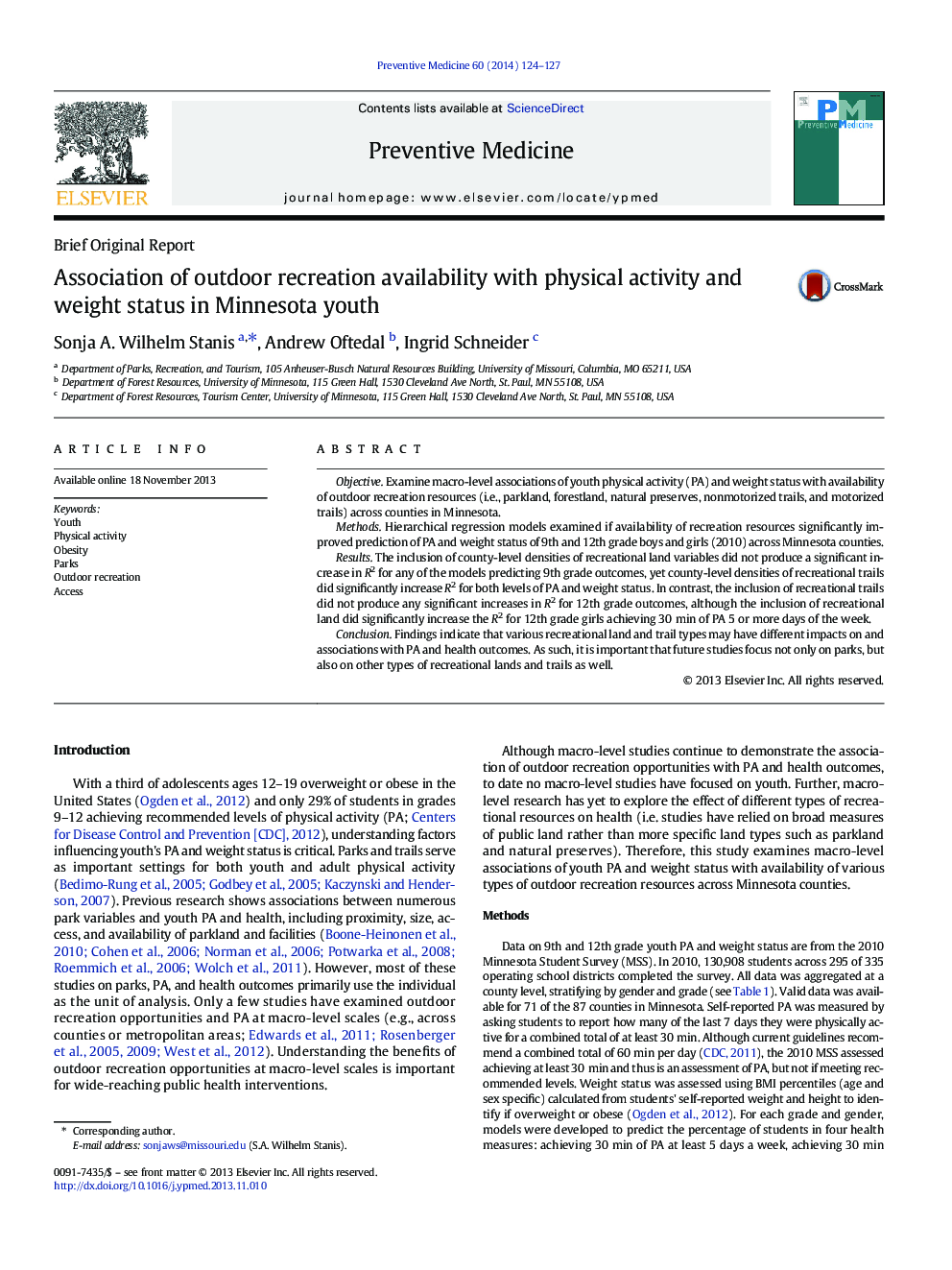| Article ID | Journal | Published Year | Pages | File Type |
|---|---|---|---|---|
| 6047381 | Preventive Medicine | 2014 | 4 Pages |
â¢Recreation resource availability predicts physical activity (PA) and weight status.â¢Recreational trails increased prediction for PA and weight status in 9th graders.â¢Recreational land increased prediction for 12th grade girls PA.â¢Recreational resource types may have different impacts on PA and health outcomes.â¢Future studies should focus on various types of recreation lands and trails.
ObjectiveExamine macro-level associations of youth physical activity (PA) and weight status with availability of outdoor recreation resources (i.e., parkland, forestland, natural preserves, nonmotorized trails, and motorized trails) across counties in Minnesota.MethodsHierarchical regression models examined if availability of recreation resources significantly improved prediction of PA and weight status of 9th and 12th grade boys and girls (2010) across Minnesota counties.ResultsThe inclusion of county-level densities of recreational land variables did not produce a significant increase in R2 for any of the models predicting 9th grade outcomes, yet county-level densities of recreational trails did significantly increase R2 for both levels of PA and weight status. In contrast, the inclusion of recreational trails did not produce any significant increases in R2 for 12th grade outcomes, although the inclusion of recreational land did significantly increase the R2 for 12th grade girls achieving 30Â min of PA 5 or more days of the week.ConclusionFindings indicate that various recreational land and trail types may have different impacts on and associations with PA and health outcomes. As such, it is important that future studies focus not only on parks, but also on other types of recreational lands and trails as well.
